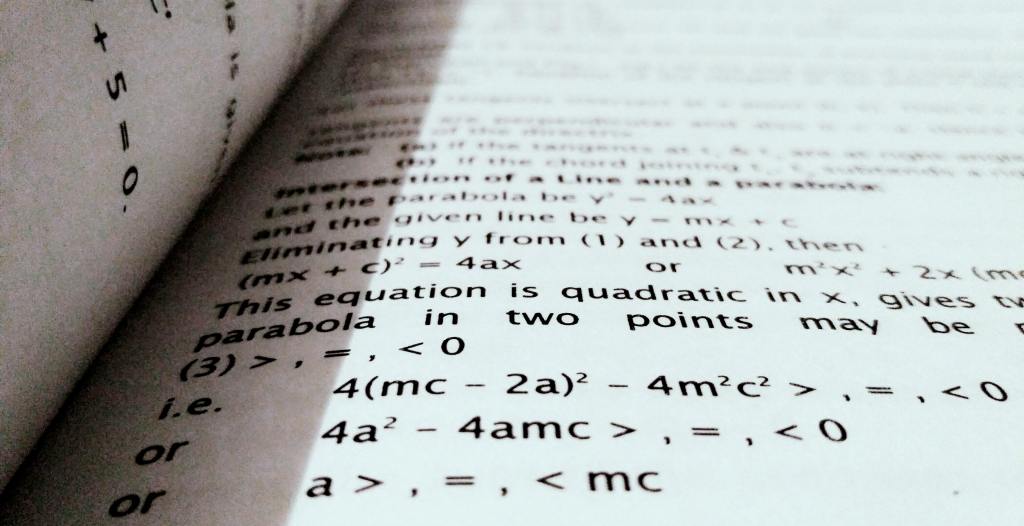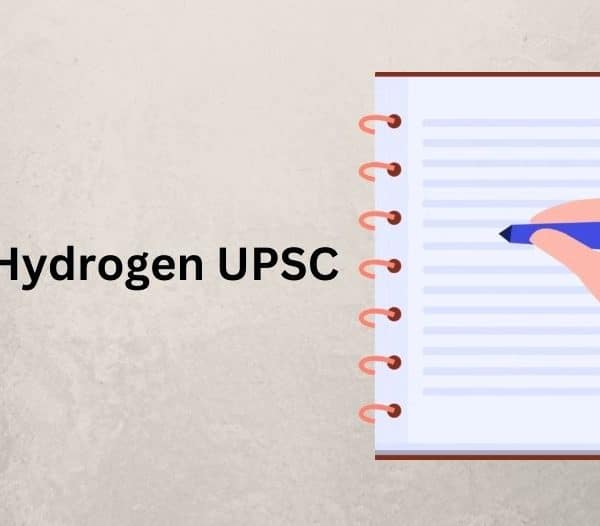Are you preparing for UPSC and chose maths optional paper for UPSC? Then the first thing you should know is the UPSC maths optional syllabus. Only after you get accustomed to the syllabus of maths optional for UPSC, you can start looking for various UPSC maths optional books and UPSC maths optional question papers that will help you prepare even better.
Here is this article, you are going to get a clear idea about the UPSC maths optional syllabus along with some important webpage links that will definitely help you crack the UPSC IAS exam and get a good score in UPSC maths optional paper.
UPSC Maths Optional Syllabus
The optional subject consists of 2 papers. Each paper is of 250 marks, making a total of 500 marks.
Paper – I
(1) Linear Algebra
Vector spaces over R and C, linear dependence and independence, subspaces, bases, dimension; Linear transformations, rank and nullity, the matrix of a linear transformation.
Algebra of Matrices; Row and column reduction, Echelon form, congruence and similarity; Rank of a matrix; Inverse of a matrix; Solution of a system of linear equations; Eigenvalues and eigenvectors, characteristic polynomial, Cayley-Hamilton theorem, Symmetric, skew-symmetric, Hermitian, skew-Hermitian, orthogonal and unitary matrices and their eigenvalues.
(2) Calculus
Real numbers, functions of a real variable, limits, continuity, differentiability, mean value theorem, Taylor’s theorem with remainders, indeterminate forms, maxima and minima, asymptotes; Curve tracing; Functions of two or three variables: limits, continuity, partial derivatives, maxima and minima, Lagrange’s method of multipliers, Jacobian.
Riemann’s definition of definite integrals; Indefinite integrals; Infinite and improper integrals; Double and triple integrals (evaluation techniques only); Areas, surface and volumes.
(3) Analytic Geometry
Cartesian and polar coordinates in three dimensions, second-degree equations in three variables, reduction to canonical forms, straight lines, the shortest distance between two skew lines; Plane, sphere, cone, cylinder, paraboloid, ellipsoid, hyperboloid of one and two sheets and their properties.
(4) Ordinary Differential Equations
Formulation of differential equations; Equations of the first order and first degree, integrating factor; Orthogonal trajectory; Equations of first order but not of the first degree, Clairaut’s equation, singular solution.
Second and higher-order linear equations with constant coefficients, complementary function, particular integral and general solution.
Second-order linear equations with variable coefficients, Euler-Cauchy equation; Determination of complete solution when one solution is known using the method of variation of parameters.
Laplace and Inverse Laplace transforms and their properties; Laplace transforms of elementary functions. Application to initial value problems for 2nd order linear equations with constant coefficients.
Also Read: Here’s How You can Begin Your IAS Preparation Journey
(5) Dynamics & Statics
Rectilinear motion, simple harmonic motion, motion in a plane, projectiles; constrained motion; Work and energy, conservation of energy; Kepler’s laws, orbits under central forces.
Equilibrium of a system of particles; Work and potential energy, friction; common catenary; Principle of virtual work; Stability of equilibrium, the equilibrium of forces in three dimensions.
(6) Vector Analysis
Scalar and vector fields, differentiation of the vector field of a scalar variable; Gradient, divergence and curl in cartesian and cylindrical coordinates; Higher order derivatives; Vector identities and vector equations.
Application to geometry: Curves in space, Curvature and torsion; Serret-Frenet’s formulae. Gauss and Stokes’ theorems, Green’s identities.
Paper – II
(1) Algebra
Groups, subgroups, cyclic groups, cosets, Lagrange’s Theorem, normal subgroups, quotient groups, homomorphism of groups, basic isomorphism theorems, permutation groups, Cayley’s theorem.
Rings, subrings and ideals, homomorphisms of rings; Integral domains, principal ideal domains, Euclidean domains and unique factorization domains; Fields, quotient fields.
(2) Real Analysis
Real number system as an ordered field with the least upper bound property; Sequences, the limit of a sequence, Cauchy sequence, completeness of real line; Series and its convergence, absolute and conditional convergence of series of real and complex terms, rearrangement of series.
Continuity and uniform continuity of functions, properties of continuous functions on compact sets. Riemann integral, improper integrals; Fundamental theorems of integral calculus.
Uniform convergence, continuity, differentiability and integrability for sequences and series of functions; Partial derivatives of functions of several (two or three) variables, maxima and minima.
(3) Complex Analysis
Analytic functions, Cauchy-Riemann equations, Cauchy’s theorem, Cauchy’s integral formula, power series representation of an analytic function, Taylor’s series; Singularities; Laurent’s series; Cauchy’s residue theorem; Contour integration.
(4) Linear Programming
Linear programming problems, basic solution, basic feasible solution and optimal solution; Graphical method and simplex method of solutions; Duality.
Transportation and assignment problems.
(5) Partial Differential Equations
Family of surfaces in three dimensions and formulation of partial differential equations; Solution of quasilinear partial differential equations of the first order, Cauchy’s method of characteristics; Linear partial differential equations of the second order with constant coefficients, canonical form; Equation of a vibrating string, heat equation, Laplace equation and their solutions.
(6) Numerical Analysis and Computer Programming
Numerical methods: Solution of algebraic and transcendental equations of one variable by bisection, Regula-Falsi and Newton-Raphson methods; solution of the system of linear equations by Gaussian elimination and Gauss-Jordan (direct), Gauss-Seidel(iterative) methods. Newton’s (forward and backwards) interpolation, Lagrange’s interpolation.
Numerical integration: Trapezoidal rule, Simpson’s rules, Gaussian quadrature formula.
Numerical solution of ordinary differential equations: Euler and Runge Kutta-methods. Computer Programming: Binary system; Arithmetic and logical operations on numbers; Octal and Hexadecimal systems; Conversion to and from decimal systems; Algebra of binary numbers.
Elements of computer systems and concept of memory; Basic logic gates and truth tables, Boolean algebra, normal forms.
Representation of unsigned integers, signed integers and reals, double precision reals and long integers. Algorithms and flow charts for solving numerical analysis problems.
(7) Mechanics and Fluid Dynamics
Generalized coordinates; D’ Alembert’s principle and Lagrange’s equations; Hamilton equations; Moment of inertia; Motion of rigid bodies in two dimensions.
Equation of continuity; Euler’s equation of motion for inviscid flow; Stream-lines, the path of a particle; Potential flow; Two-dimensional and axisymmetric motion; Sources and sinks, vortex motion; Navier-Stokes equation for a viscous fluid.
Management Syllabus – Civil Services Mains Exam UPSC
Optional Subject consists of 2 papers. Each paper is of 250 marks, making a total of 500 marks.
Management
The candidate should make a study of the concept and development of management as science and art drawing upon the contributions of leading thinkers of management and apply the concepts to the real life of government and business decision making keeping in view the changes in the strategic and operative environment.
Paper-I
1. Managerial Function and Process
Concept and Foundations of Management, Evolution of Management Thoughts; Managerial Functions – Planning, Organizing, Controlling; Decision making; Role of Manager, Managerial skills; Entrepreneurship; Management of innovation; Managing in a global environment, Flexible Systems Management; Social responsibility and managerial ethics; Process and customer orientation; Managerial processes on the direct and indirect value chain.
2. Organisational Behaviour and Design
Conceptual model of organization behaviour; The individual processes – personality, values and attitude, perception, motivation, learning and reinforcement, work stress and stress management; The dynamics of organization behaviour – power and politics, conflict and negotiation, leadership process and styles, communication;
The Organizational Processes – decision making, job design; Classical, Neoclassical and Contingency approaches to organizational design; Organizational theory and design – organizational culture, managing cultural diversity, learning organization; organizational change and development; Knowledge-Based Enterprise – systems and processes; Networked and virtual organizations.
3. Human Resource Management
HR challenges; HRM functions; The future challenges of HRM; Strategic Management of human resources; Human resource planning; Job analysis; Job evaluation; Recruitment and selection; Training and development; Promotion and transfer; Performance management; Compensation management and benefits;
Employee morale and productivity; Management of organizational climate and Industrial relations; Human resources accounting and audit; Human resource information system; International human resource management.
4. Accounting for Managers
Financial accounting – concept, importance and scope, generally accepted accounting principles, preparation of financial statements with special reference to the analysis of a balance sheet and measurement of business income, inventory valuation and depreciation, financial statement analysis, fund flow analysis, the statement of cash flows; Management accounting – concept, need, importance and scope;
Cost accounting – records and processes, cost ledger and control accounts, reconciliation and integration between financial and cost accounts; Overhead cost and control, Job and process costing, Budget and budgetary control, Performance budgeting,
Zero-base budgeting, relevant costing and costing for decision-making, standard costing and variance analysis, marginal costing and absorption costing.
5. Financial Management
Goals of finance function; Concepts of value and return; Valuation of bonds and shares; Management of working capital: Estimation and financing; Management of cash, receivables, inventory and current liabilities; Cost of capital; Capital budgeting; Financial and operating leverage; Design of capital structure: theories and practices
Shareholder value creation: dividend policy, corporate financial policy and strategy, management of corporate distress and restructuring strategy; Capital and money markets: institutions and instruments; Leasing, hire purchase and venture capital; Regulation of capital market; Risk and return: portfolio theory; CAPM; APT; Financial derivatives: option, futures, swap; Recent reforms in the financial sector.
Also Read: Check These Easy Methods to Choose Your Optional Subject
6. Marketing Management
Concept, evolution and scope; Marketing strategy formulation and components of the marketing plan; Segmenting and targeting the market; Positioning and differentiating the market offering; Analyzing competition; Analyzing consumer markets; Industrial buyer behaviour; Market research; Product Strategy; Pricing strategies; Designing and managing Marketing channels
Integrated marketing communications; Building customer satisfaction, Value and retention; Services and non-profit marketing; Ethics in marketing; Consumer protection; Internet marketing; Retail management; Customer relationship management; Concept of holistic marketing.
Paper-II
1. Quantitative Techniques in Decision Making
Descriptive statistics – tabular, graphical and numerical methods, introduction to probability, discrete and continuous probability distributions, inferential statistics-sampling distributions, central limit theorem, hypothesis testing for differences between means and proportions, inference about population variances, Chi-square and ANOVA, simple correlation and regression, time series and forecasting, decision theory, index numbers; Linear programming – problem formulation, simplex method and graphical solution, sensitivity analysis.
2. Production and Operations Management
Fundamentals of operations management; Organizing for production; Aggregate production planning, capacity planning, plant design: process planning, plant size and scale of operations, Management of facilities; Line balancing; Equipment replacement and maintenance; Production control; Supply chain management – vendor evaluation and audit; Quality management; Statistical process control, Six Sigma; Flexibility and agility in manufacturing systems; World-class manufacturing; Project management concepts, R&D management, Management of service operations; Role and importance of materials management, value analysis, make or buy decision; Inventory control, MRP; Waste management.
Also Read: Here’s the List of Mathematics Books for UPSC IAS Exam
3. Management Information System
Conceptual foundations of information systems; Information theory; Information resource management; Types of information systems; Systems development – Overview of systems and design; System development management life-cycle, Designing for online and distributed environments; Implementation and control of the project; Trends in information technology; Managing data resources – Organising data; DSS and RDBMS; Enterprise Resource Planning (ERP), Expert systems, e-Business architecture, e-Governance; Information systems planning, Flexibility in information systems; User involvement; Evaluation of information systems.
4. Government Business Interface
State participation in business, Interaction between Government, Business and different Chambers of Commerce and Industry in India; Government’s policy concerning Small Scale Industries; Government clearances for establishing a new enterprise; Public Distribution System; Government control over price and distribution; Consumer Protection Act (CPA) and The Role of voluntary organizations in protecting consumers’ rights; New Industrial Policy of the Government: liberalization, deregulation and privatisation; Indian planning system; Government policy concerning development of Backward areas/regions; The Responsibilities of the business as well as the Government to protect the environment; Corporate Governance; Cyber Laws.
5. Strategic Management
Business policy as a field of study; Nature and scope of strategic management, Strategic intent, vision, objectives and policies; Process of strategic planning and implementation; Environmental analysis and internal analysis; SWOT analysis; Tools and techniques for strategic analysis – Impact matrix: The experience curve, BCG matrix, GEC mode, Industry analysis, Concept of the value chain; Strategic profile of a firm; Framework for analysing competition; Competitive advantage of a firm; Generic competitive strategies; Growth strategies – expansion, integration and diversification; Concept of core competence, Strategic flexibility; Reinventing strategy; Strategy and structure; Chief Executive and Board; Turnaround management; Management of strategic change; Strategic alliances, Mergers and Acquisitions; Strategy and corporate evolution in the Indian context.
Also Read: Check-out These UPSC Maths Optional Question Papers
6. International Business
International Business Environment: Changing composition of trade in goods and services; India’s Foreign Trade: Policy and trends; Financing of International trade; Regional Economic Cooperation; FTAs; Internationalisation of service firms; International production; Operation Management in International companies; International Taxation; Global competitiveness and technological developments; Global e-Business; Designing global organisational structure and control; Multicultural management; Global business strategy; Global marketing strategies; Export Management; Export-Import procedures; Joint Ventures; Foreign Investment: Foreign direct investment and foreign portfolio investment; Cross-border Mergers and Acquisitions; Foreign Exchange Risk Exposure Management; World Financial Markets and International Banking; External Debt Management; Country Risk Analysis.
Conclusion
Hopefully, this article will give you a brief idea about the UPSC maths optional syllabus For important notes, UPSC maths optional books, UPSC maths optional question papers etc, you can keep an eye here.
You can also share your thoughts with us about choosing maths as your optional paper and how you are preparing for it. Share your thoughtd by writing in the comment box below.
Also Read : How to Become IPS Officer after 12th? What to Study to Become an IPS Officer?







Thank you for providing the blog, it was very helpful for maths. What do you guys think about it and what is your optional subject?